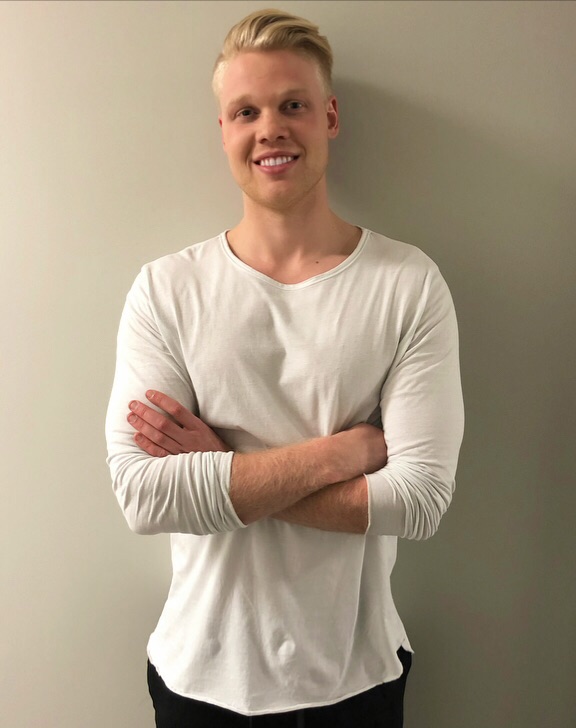
How Often Should I Go to the Gym?
Nov 15, 2017 mindpump#beastmode… #teamnodaysoff… Buff dudes on social media bombard us with it constantly. “#trainharderthanme” they dare us. Everyone in the fitness industry seems to be telling you MORE is the answer. MORE supersets. MORE days in the gym. MORE intensity. You’ve been following their workouts, but results aren’t near what you expected. So what gives?
What if I told you training HARDER isn’t the answer?
More doesn’t always equal more
Training intensity and the ability to push yourself are extremely important to muscle growth. The problem is, it’s easy to forget that OUTSIDE of the gym is when your muscles are actually repairing and growing. Studies show that pushing too hard, too often can actually hinder your progress significantly, leading to decreased strength, elevated cortisol levels, lower levels of IGF-1 (an essential hormone to growth), and a plethora of other negative side effects. (Izquierdo, 2006) (González-Badillo, 2005)
Imagine your muscles are sitting at a baseline pre-workout. As you train your muscles, you damage them, causing the muscles to dip below said baseline. For the next 48-72 hours, a muscle building signal is being sent out to your body, telling it your muscles need attention to recover and adapt to the stress of the workout.
However, if we do too much damage, your muscles drop too far below the baseline. The best the body can do is repair the muscles back to the previous baseline, if not a bit lower. Think of this as a “recovery trap”: you do too much muscle damage for your body to recover from. The best your body can do over the next three days before the muscle building signal fades, is repair the muscles back to the point they were at previously. This is why you can perform endless sets and reps, and still not make progress, or even get weaker.
So MORE isn’t the answer. But I still don’t know how many times to go to the gym?
The key to a successful training program is figuring out what’s the LEAST amount of training you can do, while still achieving good results. This is the MINIMUM EFFECTIVE DOSE.
Finding your minimum effective dose
Most beginner and intermediate trainees will find their minimum effective dose is around 3-4 days per week of well programmed resistance training. Training in this range allows you to touch on each muscle group AT LEAST twice per week, acquire enough volume and muscle damage for growth, while also allowing adequate time for recovery.
Start with either full body training (3 times/week) or upper/lower split training (4 times/week). Both training splits allow you to train every muscle group a minimum of twice a week. Studies show that, volume being equal (sets x reps x weight = volume), muscles respond much better to being trained more frequently (2-3 times/week) than the typical “bro-split” of training a muscle group once per week. (Scheonfeld, 2016.) Training muscles with more frequency also allows you to lower intensity, which is helpful in avoiding the recovery trap.
What about the other days of the week?
Once you find your minimum effective dose, you should be building muscle, and feeling fresh every time you hit the gym. I highly recommend sticking with 3-4 days a week of heavy resistance training for as long as possible. Most trainees will find the ideal balance of training, recovery, and having a life outside the gym in this range.
On off days, active recovery is a great way to speed up the muscle building process. Try to make active recovery something you enjoy, like hiking, biking, or even light band or bodyweight exercises.
However, if you want more time in the gym, the “Focus Sessions” concept used in Mind Pump’s MAPS Aesthetic program is perfect. Click below to check it out.
Focus sessions are used to add more volume and frequency to lagging body parts or areas you really want to focus on, without doing too much muscle damage. These sessions shouldn’t feel nearly as intense as your 3-4 foundational training days. The focus of the session should be on one specific body part you want to grow more (i.e. shoulders, calves). Stick with higher rep ranges (15-20), and focus on the mind-muscle connection (really “feeling” the desired muscle work). Make sure to stop well short of failure.
Once again, I highly recommend sticking with 3-4 days a week of training as long as possible. If you have a strong urge to train more, or want to bring up lagging body parts, add in 1-2 focus sessions per week.
What really matters
The most important part of any training regime is making sure that it’s enjoyable and sustainable. Mental burn out is a sure way to stop progress. If you’re constantly exhausted from your training, or feel you have no social life because you spend all your time in the gym, you’re doing too much.
If you relate to this, shift your focus to finding your minimum effective dose. You’ll be amazed how much better you look AND feel.
Sources
https://www.ncbi.nlm.nih.gov/pubmed/16410373
https://www.ncbi.nlm.nih.gov/pubmed/16095427?access_num=16095427&link_type=MED&dopt=Abstract
https://www.ncbi.nlm.nih.gov/pubmed/27102172
Author: Jeremiah Bair
Website: www.bairfit.com

Jeremiah is an ACSM certified Personal Trainer from Nebraska. He also has a Business Management Degree from the University of Nebraska-Lincoln. Over the last few years of his career as a personal trainer, he has fallen in love with the way fitness allows him to connect with people.
Nothing is more rewarding for him than helping others transform into happier, more confident versions of themselves. His goal is to share knowledge to help as many as possible lead long, healthy, and fulfilling lives







